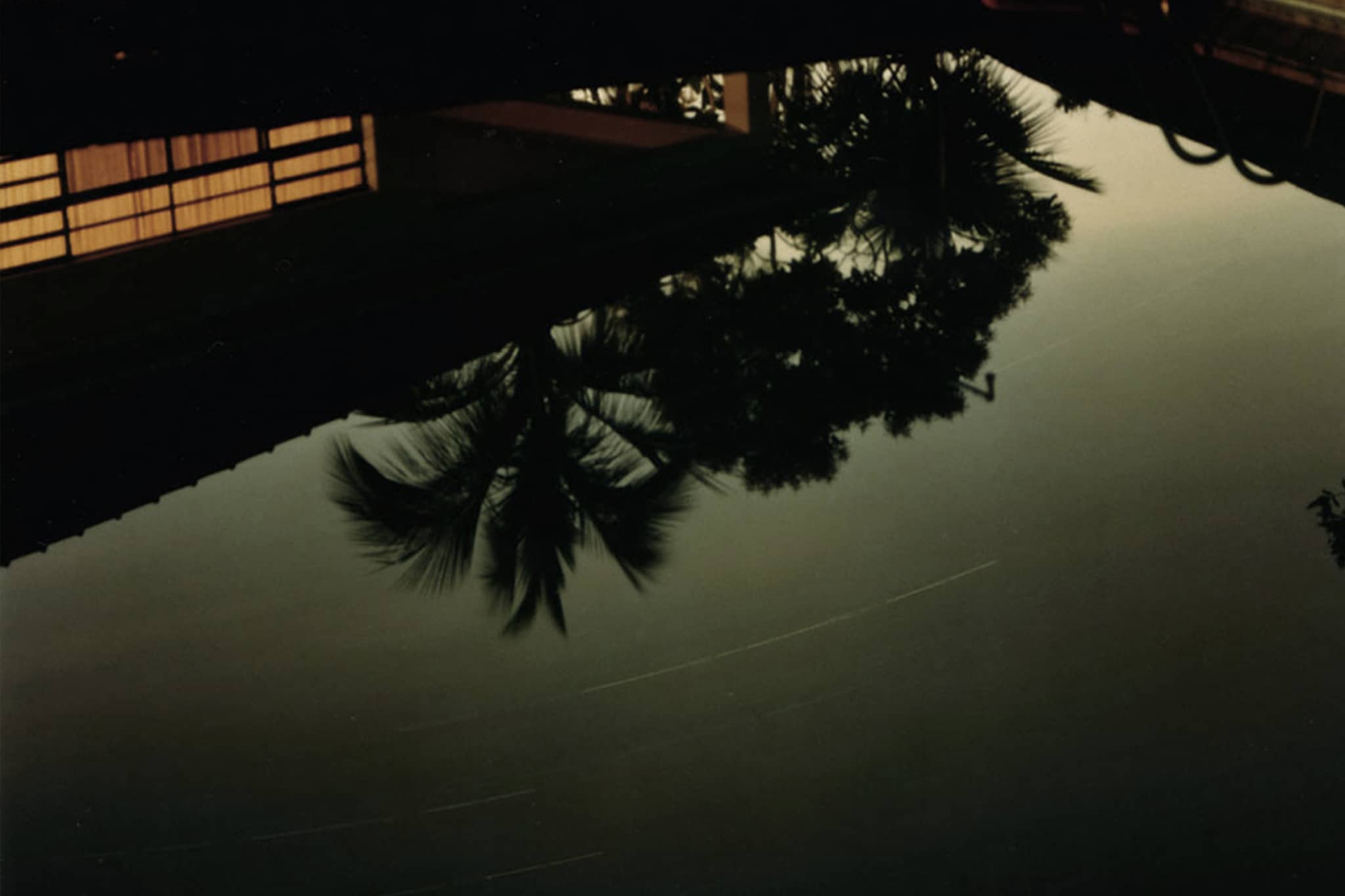
Scroll for English
A Noite dos Tempos
A ciência na busca de uma ação precisa na fotografia de Feco Hamburger é a de virar a noite pelo avesso, num desafio “irracional” de aproximar-se da natureza do tempo e, com isso, juntá-la à natureza do homem, para falar de um sistema comum aos dois, através de imagens noturnas de longa exposição. A partir desse sentido ele traz para fora do diafragma o “dia” que lá dentro a luz invisível a olhos nus revela, fotograma por fotograma. O resultado são imagens com intensa poesia, vindas de um mundo em silêncio; vindas das fases da lua que invocam noites “de sol” em paisagens bucólicas; vindas de uma geografia que recorta sistemas impensáveis; vindas de tensas metáforas em seus riscos de neon que tanto percebem a velocidade da imagem buscando a velocidade da luz, no meio da cidade adormecida.
Minutos, horas, noites a fio e o fotógrafo ali, diante de um nada escuro-claro que no início nem ele mesmo sabia qual seria o resultado. Experiência de cientista diante do enxame que a física é capaz de produzir no tempo-espaço, eis então que surgiram os primeiros resultados entre o corpo em movimento da terra e a alma da noite, como se o mistério estivesse apenas começando. Uma câmera parada e a noite em movimento: na primeira seqüência entre todas, um tríptico mostra a copa de palmeiras imperiais possuídas por uma construção imagética que desenha um tempo passado, numa visão que lembra a atmosfera de algumas fotografias realizadas no século XIX, fazendo com que essa série ganhe uma identidade tão serena que ultrapassa a linha do tempo.
Mas as fotografias de Feco Hamburger exploram o mimetismo do presente. Enquadra os delicados grafismos das estrelas num firmamento onde riscos e raios atestam que no universo “ninguém” dorme. Transforma situações; inverte a arquitetura; imprime uma abrangência de cores tão independente quanto sutil; abre janelas; cria expectativas para mostrar que, tanto no campo quanto na cidade, uma constelação se revela com a mesma grandeza e simplicidade, para mais uma vez anunciar aos homens sua presença tão próxima e tão desconhecida.
Quando seus lotes quadrados percebem a redoma do visível, na série feita por trás da janela de um avião e deslizando a partir de um sépia praticamente emotivo, o fotógrafo leva sua intenção ainda mais para o campo do simbólico: voa para o noturno da noite tentando aproximar-se daquele “outro” firmamento, de um lugar comum entre o seu estado de existência e a existência das suas tão belas e significativas imagens, eloqüentes, corajosas, vindas da distância e da aproximação que dá vida às longas noites dos tempos.
in Noites em Claro, catálogo da exposição, Pinacoteca do Estado de São Paulo, 2004
The Night of Time
Scientific pursuit of the precise action in the photography of Feco Hamburger entails turning night inside out in an irrational challenge to come closer to the nature of time, and, in so doing, connect it to the nature of man. This liaison is sought so that we can speak of a system common to both, attainable through nocturnal images shot with long-exposure times. In the process, the photographer exhumes the “day” revealed by the light invisible to the naked eye drawn from within the depths of the diaphragm, frame by frame. The result is a series of images with intense poetry, captured from a world of silence, captured from the phases of the moon that evoke nights of sunlit bucolic landscapes, captured from a geography that cuts out unthinkable systems, and captured from tense metaphors drawn in neon streaks entirely perceptive of the speed of an image seeking the speed of light amidst a sleeping city. Minutes, hours and nights on end, the photographer awaits in the stillness of a dark-light nothingness that, at the beginning, not even he knew the outcome of which would be – like an experiment that is performed by a scientist faced by a swarm which only physics is capable of producing in time and space, and that yields its first results between the body of earth in motion and the soul of night, as though the mystery were just starting to enfold. A camera resting still and a night in motion: in the first of all sequences, a triptych shows the tops of imperial palms embodying an imagerial construction that depicts a past time, in a vision that recalls the atmosphere typical of some photographs made in the 19th century, and that makes this series gain an identity so serene that it goes beyond the line of time. But the photographs of Feco Hamburger explore the mimesis of the present – it frames the delicate graphic design of stars in a firmament where streaks and rays attest to the fact that “nobody” sleeps in the universe. It transforms situations, inverts architecture, prints a wide-range of colors as independent as they are subtle, opens windows, and creates expectations to show that a constellation reveals itself with the same greatness and simplicity in both the country and the city, ever intent on announcing to man a presence so close yet so unknown. When his square batches perceive the bubble of that which is visible, in the series taken behind the window of a plane, the photographer drifts from a practically emotive sepia intentionally further toward the field of symbolism. He flies toward the nocturne of night, in an endeavor to bring himself closer to that “other” firmament, away from the commonplace, and somewhere between his state of existence and the existence of his images, rife with beauty and meaning, both eloquent and bold, which come from afar and now draw close to give life to the long nights of time.
in Noites em Claro, exhibition catalog, Pinacoteca do Estado de São Paulo, 2004